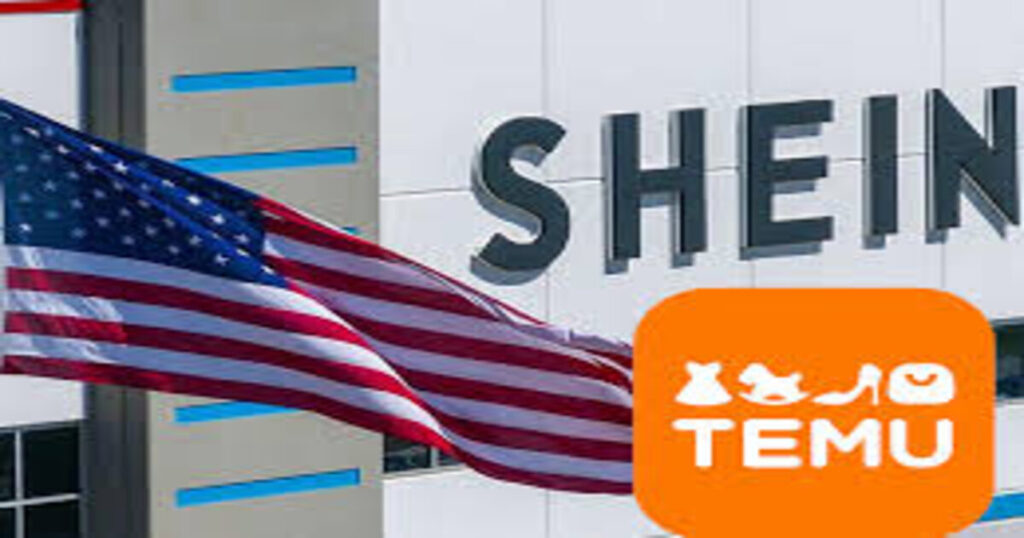Introduction Temu tariff 2025
If you’ve recently shopped on Temu for ultra-affordable fashion, gadgets, or home goods, you’re not alone. Millions of American consumers have turned to this budget-friendly online marketplace for low-cost imports direct from China. Temu tariff 2025
But things are changing fast. Due to escalating U.S. tariffs, Temu is now dramatically shifting its supply chain strategy—moving away from Chinese imports into alternative sourcing models. In this article, we’ll take a deep dive into the origins of Temu, the significance of U.S. trade policies, how Temu is adapting to regulatory and economic pressures, and what this means for the future of digital retail.
1. Background: What Is Temu?
Temu is an e-commerce platform operated by PDD Holdings, the same parent company behind China’s Pinduoduo. Launched in the U.S. in 2022, Temu quickly gained immense popularity for its rock-bottom pricing model, powered by direct-to-consumer shipments from Chinese factories. The company leveraged the power of TikTok marketing, influencer campaigns, and strategic price cuts to capture a broad customer base.
By cutting out intermediaries and tapping into China’s manufacturing ecosystem, Temu disrupted established online marketplaces and attracted price-conscious shoppers seeking fast deals on fashion, tech accessories, beauty products, and home essentials.
2. The Tariff Problem: Why Temu Had to Change. Temu tariff 2025
Temu’s core model relied heavily on Section 321 of the U.S. Trade Act, which allows goods valued under $800 to enter the country without being subjected to tariffs. This provision, known as the de minimis rule, enabled companies like Temu to ship individual packages from Chinese warehouses directly to American consumers without paying import duties.
However, in 2025, the U.S. government—under mounting pressure to support domestic manufacturing and reduce trade imbalances—introduced significant reforms to Section 321. These changes included:
- Stricter enforcement and customs inspections
- Exclusions for goods originating from “non-market economies,” such as China
- Increased scrutiny of e-commerce platforms exploiting the loophole
The result was a significant cost increase for Temu, eroding its price advantage and posing logistical challenges. The de minimis reform also forced Temu to take accountability for compliance and product quality, which was once shielded under the direct-shipping model.
3. Temu’s Strategic Pivot: Beyond China. Temu tariff 2025
To respond proactively, Temu has launched a major business transformation. The company is no longer solely dependent on Chinese manufacturers and is working to:
- Diversify its supplier base by partnering with manufacturers in Vietnam, Indonesia, Mexico, Turkey, and Eastern Europe. This reduces geopolitical risk and tariff exposure.
- Establish U.S.-based distribution and fulfillment centers, enabling local warehousing and faster delivery timelines. This also ensures better compliance with federal and state-level consumer protection regulations.
- Invest in automation and logistics optimization to streamline operations and reduce supply chain costs.
- Build direct relationships with domestic U.S. suppliers, creating hybrid sourcing models to maintain product availability while minimizing reliance on Chinese imports.
This strategic overhaul is part of Temu’s larger vision to become a truly global e-commerce player, adaptable to changing regulations and shifting economic trends.
4. Consumer Impact: A Mixed Bag. Temu tariff 2025
Temu’s supply chain transformation is expected to have varying effects on consumers:
- Positive Outcomes:
- Faster and more predictable shipping from domestic or regional warehouses.
- Improved customer service and easier returns due to U.S.-based logistics operations.
- Greater product quality oversight as Temu increases vendor accountability.
- Potential Trade-offs:
- Gradual price increases as cost savings from Chinese labor and logistics are diminished.
- Narrower selection of niche or ultra-low-cost items that were readily available through Chinese suppliers.
- Transition-related delays or stock shortages during restructuring.
Despite these trade-offs, Temu remains committed to delivering value. By embracing technology and strategic sourcing, it aims to maintain competitive pricing while elevating the overall shopping experience.
5. Industry-Wide Implications: A New E-Commerce Landscape. Temu tariff 2025
Temu’s pivot is not occurring in isolation. The global e-commerce industry is witnessing a fundamental transformation, driven by:
- Decoupling from China: As tensions between the U.S. and China intensify, many companies are re-evaluating their dependencies and exploring nearshoring or friendshoring.
- Trade Policy Uncertainty: E-commerce firms are increasingly sensitive to policy shifts and are designing agile supply chains that can withstand shocks.
- Rise of Localized Fulfillment Models: Companies are investing in micro-warehousing, AI-based inventory forecasting, and domestic sourcing to improve reliability.
- Growing Regulatory Scrutiny: Concerns about forced labor, counterfeit goods, and data security are prompting tighter regulations that platforms must navigate.
For competitors like Shein, AliExpress, and Wish, Temu’s experience serves as both a cautionary tale and a blueprint for adaptation.
Conclusion
Temu’s departure from Chinese import reliance signals a pivotal shift in global retail logistics. As U.S. tariffs reshape the dynamics of online shopping, e-commerce giants must embrace flexibility, transparency, and long-term resilience.
Temu’s ambitious reconfiguration—from supplier diversification to domestic warehousing—may very well define the next chapter of e-commerce evolution. While short-term challenges are inevitable, the move positions Temu as a forward-thinking platform better prepared to serve modern consumers in a changing world.

Temu tariff 2025


